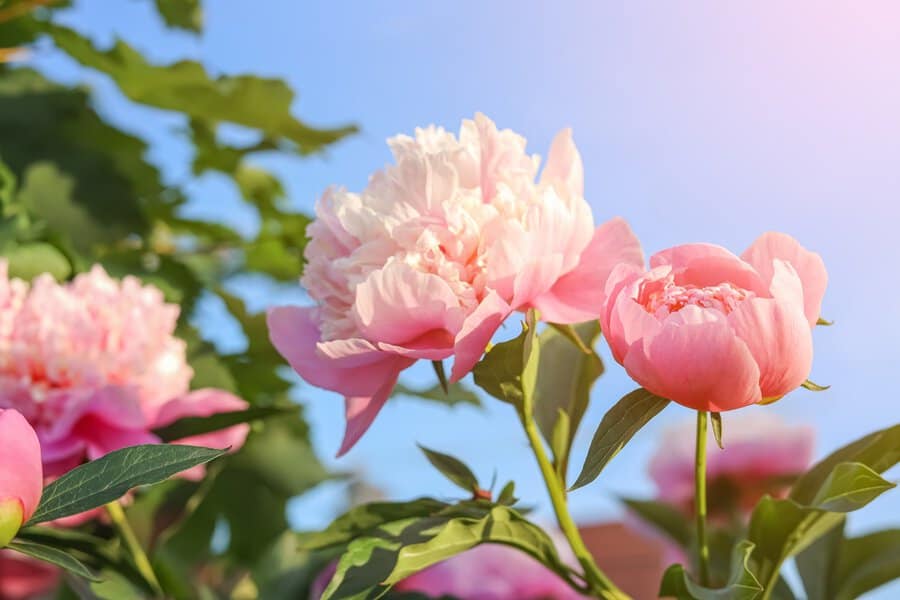
Most Beautiful Flowers to Transform Your Garden
Imagine stepping into a world where vibrant colors dance before your eyes, intoxicating fragrances fill the air, and delicate petals whisper the secrets of nature’s artistry. Flowers have captivated humanity for centuries, symbolizing love, beauty, and the fleeting nature of life itself. In exploring the most beautiful flowers, we delve into their enchanting qualities and uncover tips for nurturing these stunning treasures in our gardens.
1. Rose

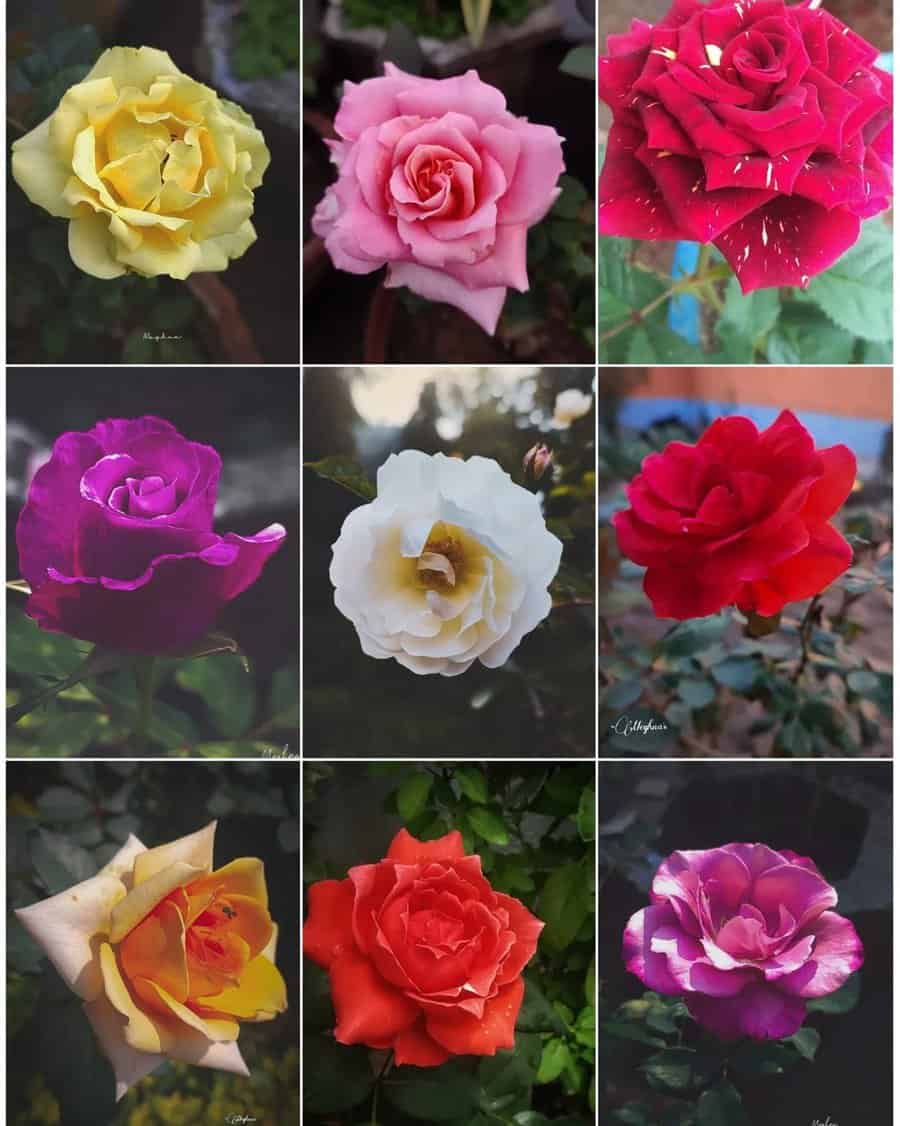
Roses are renowned for their beauty and symbolism, which makes them a timeless choice for gardens and bouquets. To achieve vibrant blooms, select a location that offers plenty of sunlight and well-draining soil. Regular deadheading encourages more flowers, while an organic mulch helps retain moisture and suppress weeds. When watering, do so at the base of the plant to prevent fungal diseases.
2. Orchid
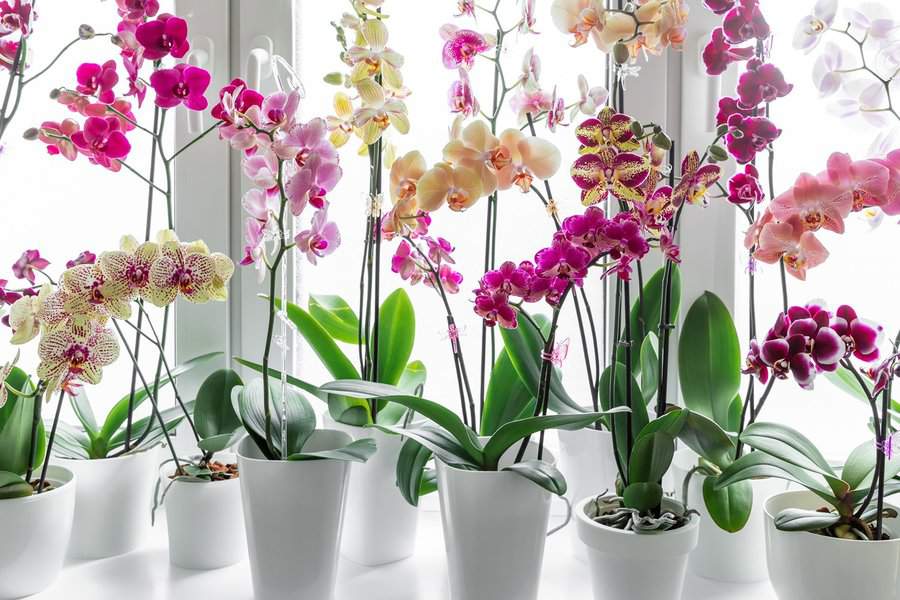
Orchids, with their exotic appearance, thrive in environments that mimic their native tropical habitats. Providing adequate humidity and filtered light is crucial for their health. Consider using a potting mix designed specifically for orchids, as it allows for proper drainage while retaining some moisture. To promote blooming, maintain a consistent watering schedule, letting the medium dry out slightly between sessions.
3. Tulip
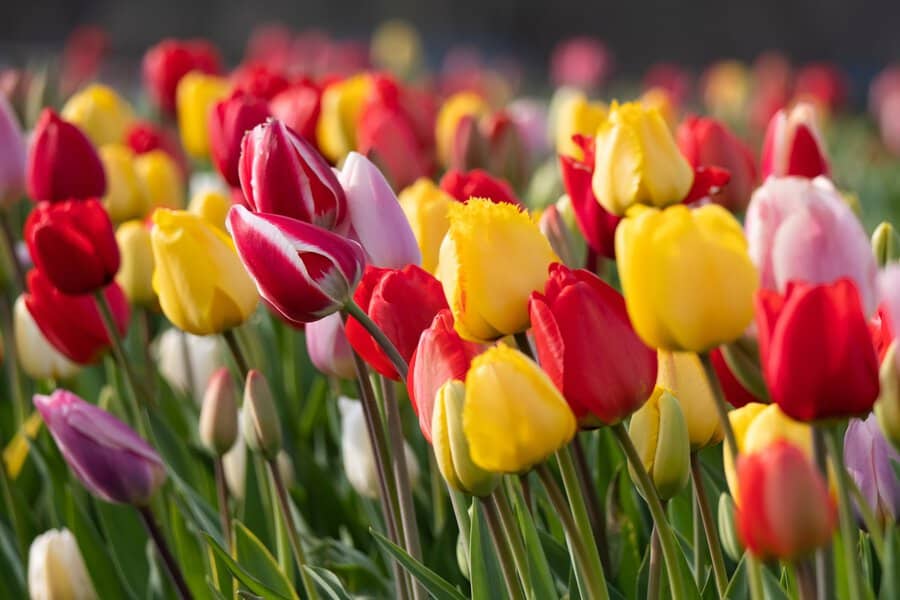
Tulips are spring perennials that offer a burst of color to any landscape. Planting bulbs in well-drained soil during the fall ensures robust growth in the spring. Tulips thrive in full sun, so plant them at a spot that receives at least six hours of sunlight daily. It’s essential to regularly water them during dry spells, but avoid soggy soil to prevent bulb rot.
4. Lily
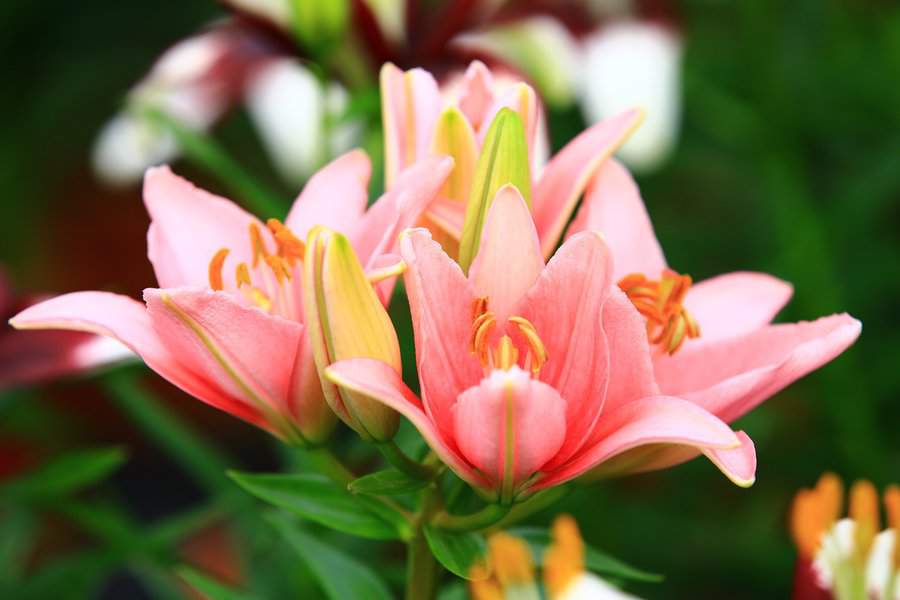
Lilies are celebrated for their elegant shapes and intoxicating fragrances. They prefer well-draining soil rich in organic matter, which supports their growth. Plant bulbs at a depth of about three times their height to allow for strong root development. To prolong flowering, remove spent blooms, and consider supporting taller varieties with stakes to prevent them from toppling over.
5. Jasmine
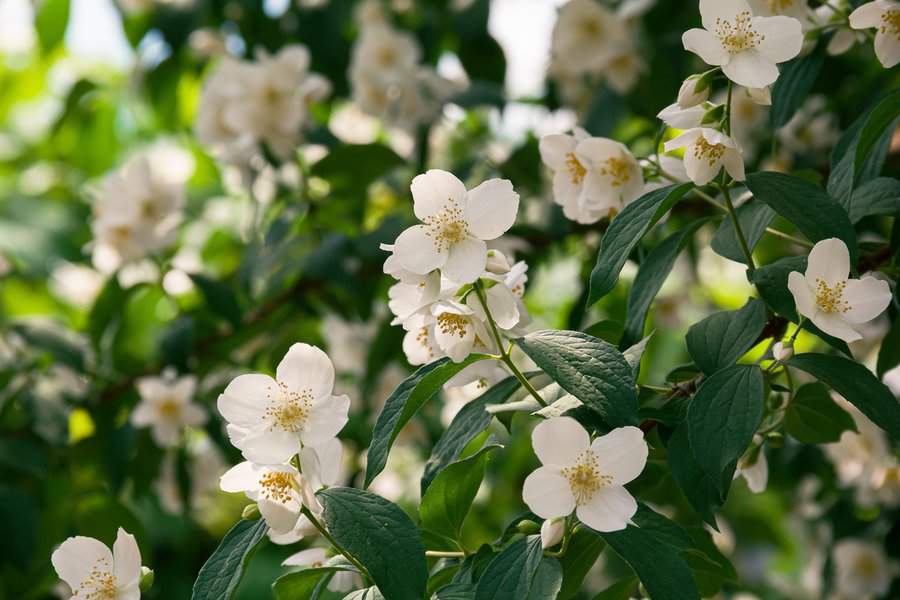
Jasmine is famous for its fragrant white or yellow flowers that bloom throughout the summer. For optimal growth, plant in full sun to partial shade in well-draining soil and prune after flowering to encourage bushier growth and more blooms in subsequent seasons. This hardy vine can also be trained to climb trellises or fences.
6. Lotus
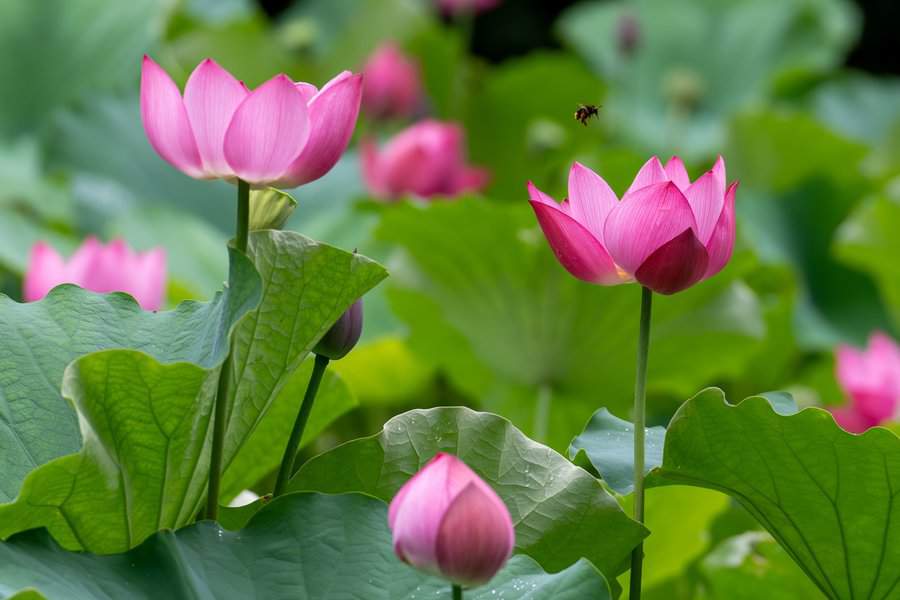
Lotus plants are unique aquatic flowers that thrive in shallow ponds. These stunning blooms require full sun and warm temperatures to flourish. Ensure the water level remains consistent so the leaves can float without waterlogging. Fertilizing with a water-soluble formula specifically for aquatic plants will support their growth and flowering.
7. Cherry Blossom (Sakura)
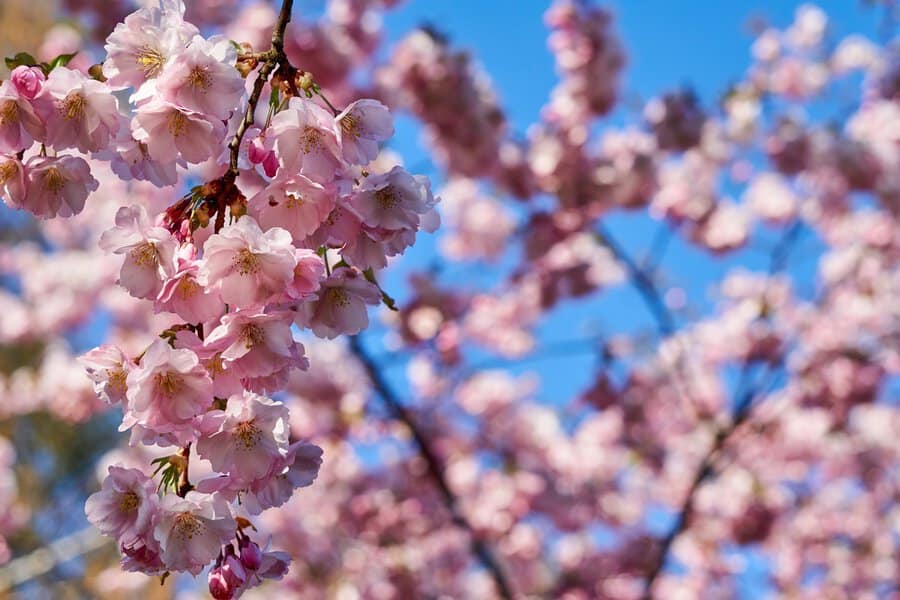

Cherry blossoms are iconic for their breathtaking beauty and ephemeral nature. They prefer full sun and well-drained soil. To promote vibrant blooms, avoid heavy pruning. You should instead focus on maintaining the tree’s natural shape. If you plant these near walkways or patios, their petals can create a picturesque scene during the blooming season.
8. Bird of Paradise
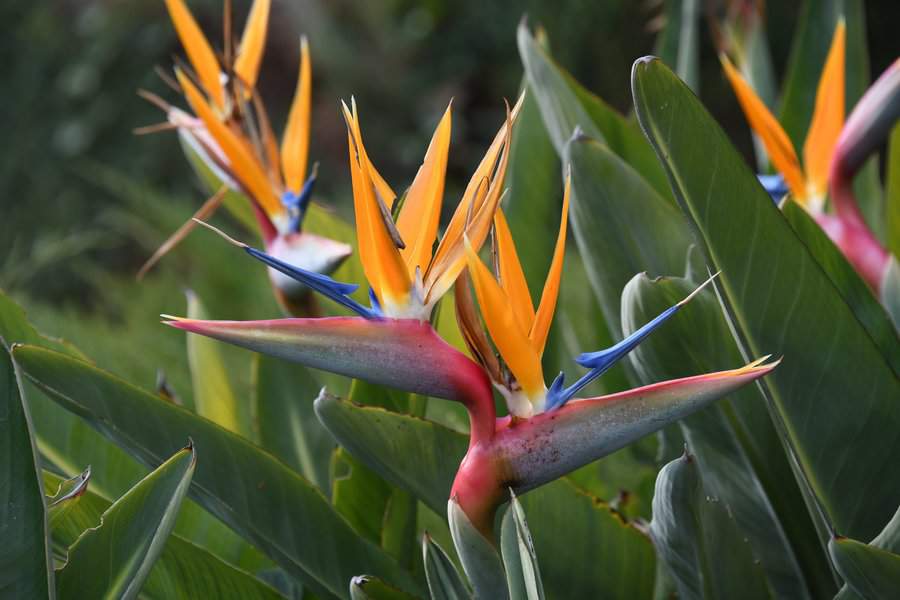
This tropical plant is known for its striking flowers that resemble a bird in flight. Bird of Paradise prefers bright light and warmth, thriving in well-draining soil. Regular watering during the growing season supports growth, and reducing water intake in the fall encourages dormancy. These plants can be an eye-catching centerpiece in any garden or landscape, so ensure they have enough space to grow.
9. Peony

Peonies are beloved for their lush blooms and intoxicating fragrance. Plant them in well-drained soil with good air circulation to prevent disease. Providing support during their blooming season can prevent heavy flowers from drooping. Peonies flourish in full sun and can last for generations if properly cared for.
10. Dahlia
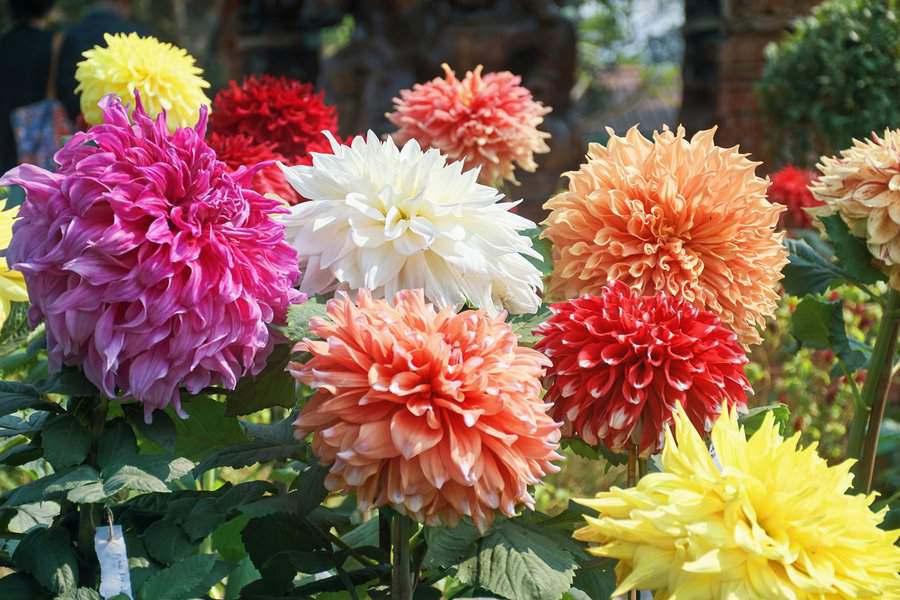
Since dahlias come in various colors and forms, they are a versatile garden choice. This flower requires full sun and rich, well-drained soil for optimal growth. Plant tubers in the spring after the last frost, spacing them adequately to allow for airflow. Regularly deadheading promotes continued blooming throughout the season.
11. Magnolia
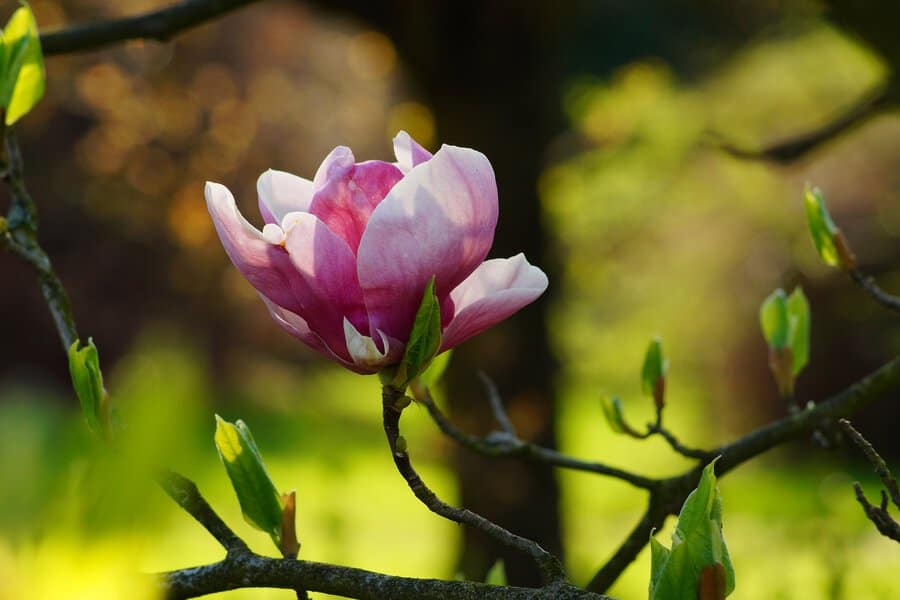
Magnolias are striking trees and shrubs that boast large, fragrant flowers. Choose a planting site that receives full sun to partial shade and has rich soil that is well-drained. These plants benefit from regular watering during dry spells, especially when young. Protect their roots with mulch to help retain moisture and keep them cool.
12. Gardenia
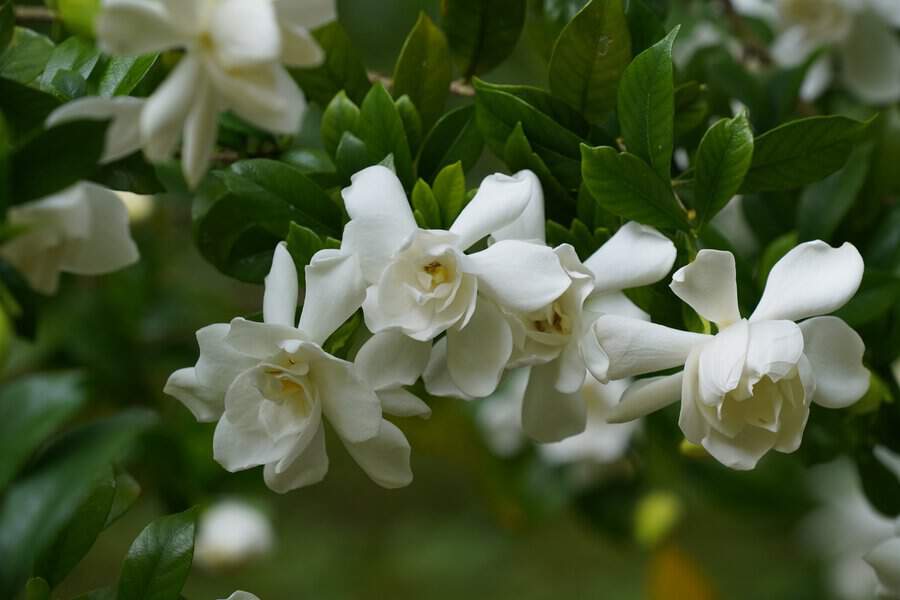
Gardenias are cherished for their creamy white blooms and sweet fragrance. They thrive in well-drained, acidic soil and prefer partial shade to full sun. Regularly check for pests and diseases to ensure healthy growth. Gardenias benefit from consistent moisture, so consider mulching. It will also reduce competition from weeds.
13. Hibiscus
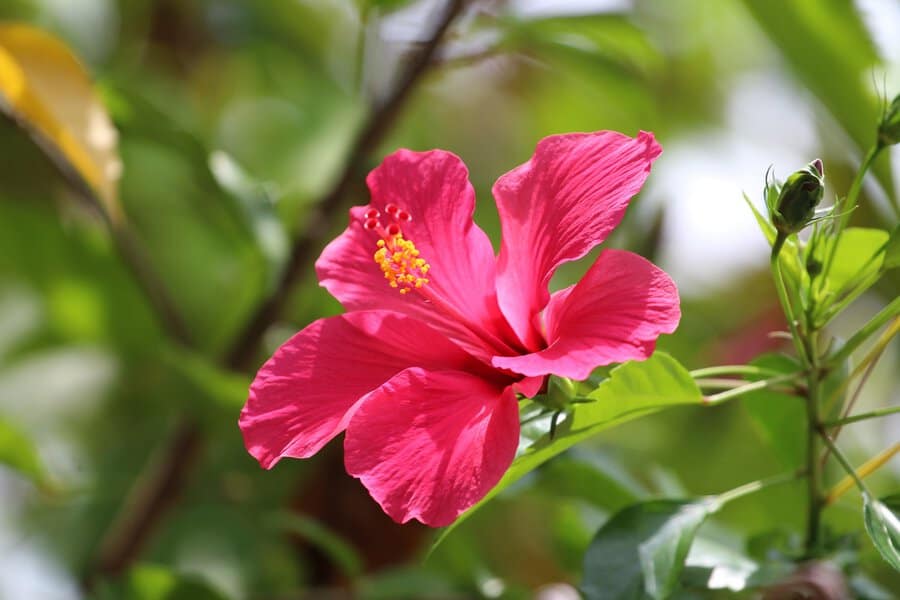
Hibiscus thrives in full sun and has flowers that are bold and vibrant. It needs well-drained soil to prevent root rot. Regular watering during dry spells promotes healthy growth, and pruning encourages bushier plants. Hibiscus can also be grown in containers on patios and balconies.
14. Hydrangea
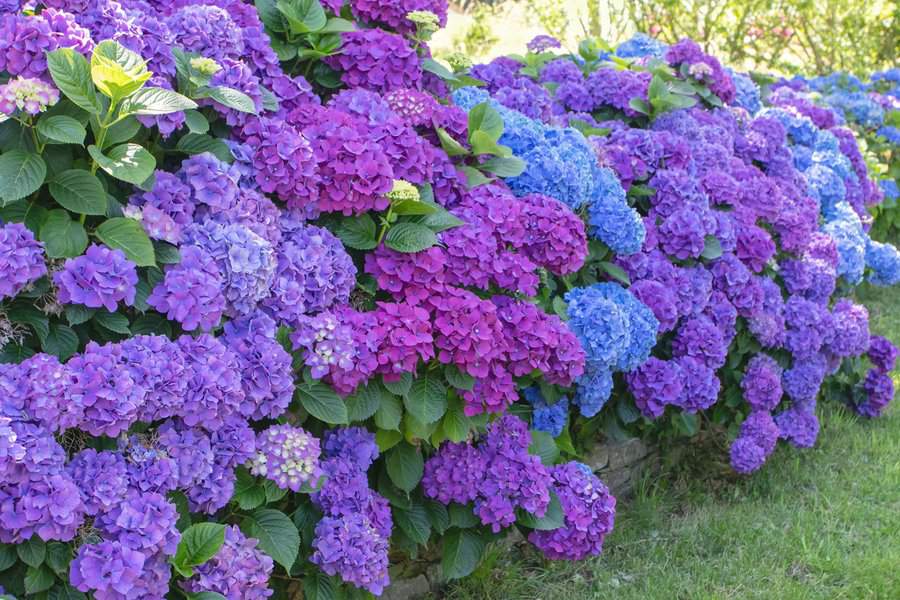
Hydrangeas are popular for their large, showy flower clusters that can change color based on soil pH. They prefer partial shade and well-drained soil rich in organic matter. Regularly watering during dry periods keeps the blooms vibrant. For optimal blooms, deadhead spent flowers and consider pruning in late winter or early spring.
15. Bluebell
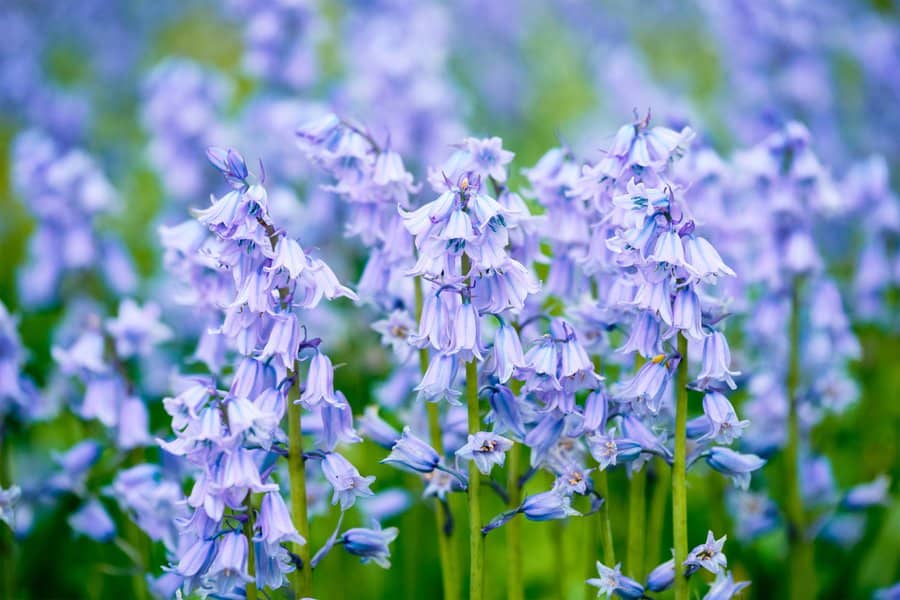
Bluebells are enchanting spring flowers that create stunning carpets of blue in gardens. They thrive in moist, well-drained soil and prefer partial shade. After blooming, allow the foliage to die back naturally — this helps nourish the bulbs for next year’s growth.
16. Iris
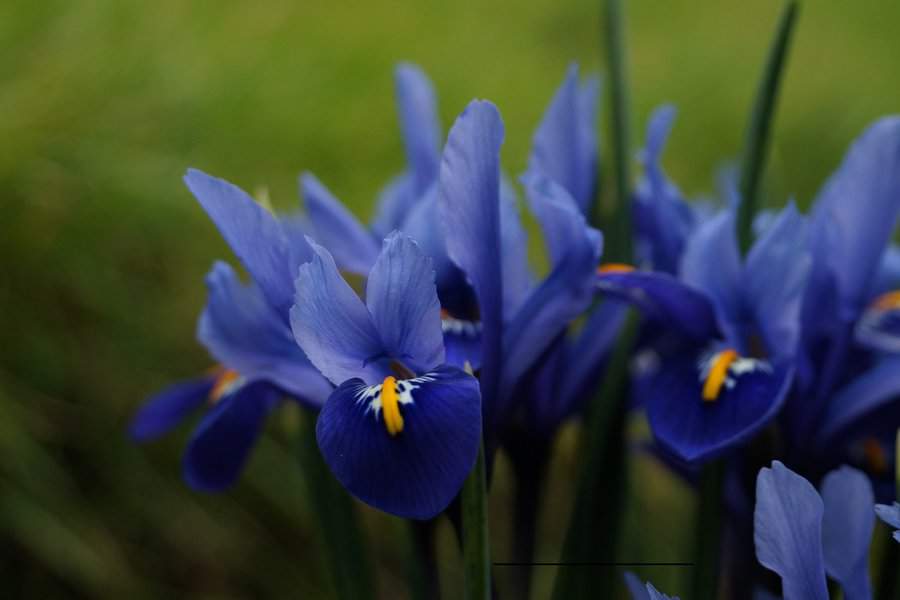
Irises are known for their intricate blooms and come in various colors. These hardy plants prefer well-drained soil and full sun for the best growth. Plant rhizomes in the summer or fall, slightly exposing them to the soil surface. Regularly remove spent blooms for a neater appearance and new growth.
17. Calla Lily
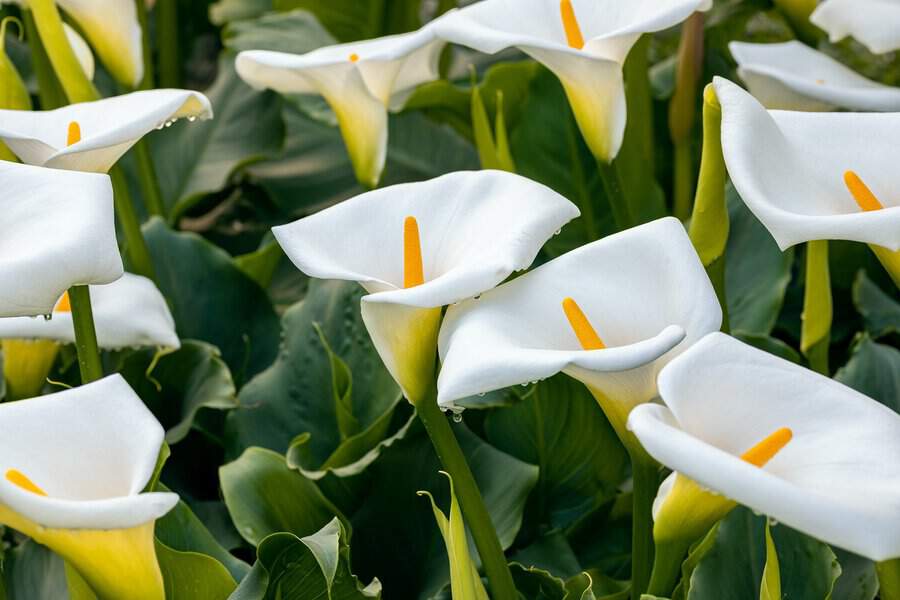
Calla lilies are elegant and striking, featuring trumpet-shaped flowers. They thrive in well-drained soil with a mix of sun and shade. When planting, ensure the tubers are placed at least 2–3 inches deep. Watering consistently during the growing season will support healthy blooms while reducing water during dormancy is crucial in the fall.
18. Sunflower
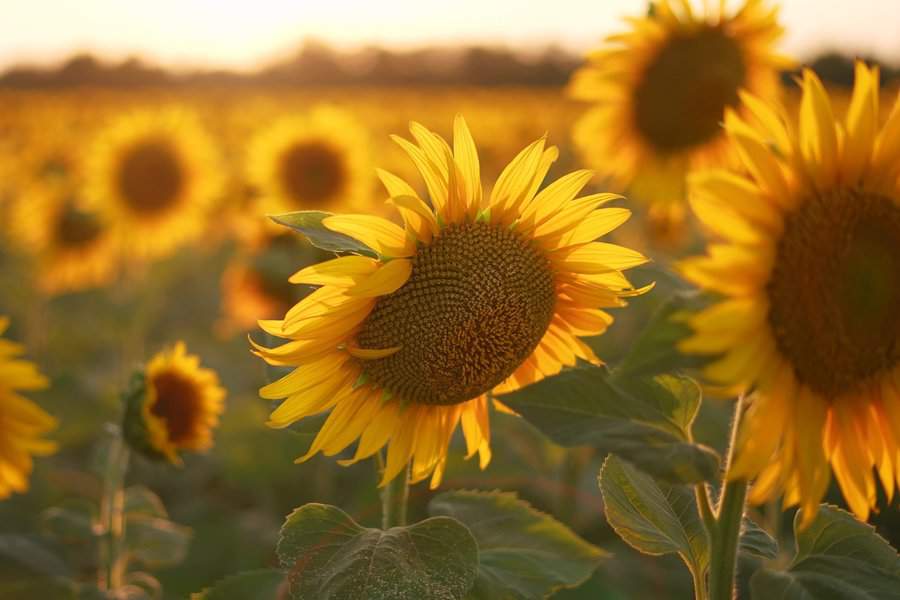
Sunflowers are iconic for their towering height and cheerful blooms. These plants thrive in full sun and well-draining soil, which is ideal for a sunny garden. Plant seeds after the last frost, spacing them adequately to allow growth. Regular watering during dry spells is essential for vibrant blooms.
19. Lavender
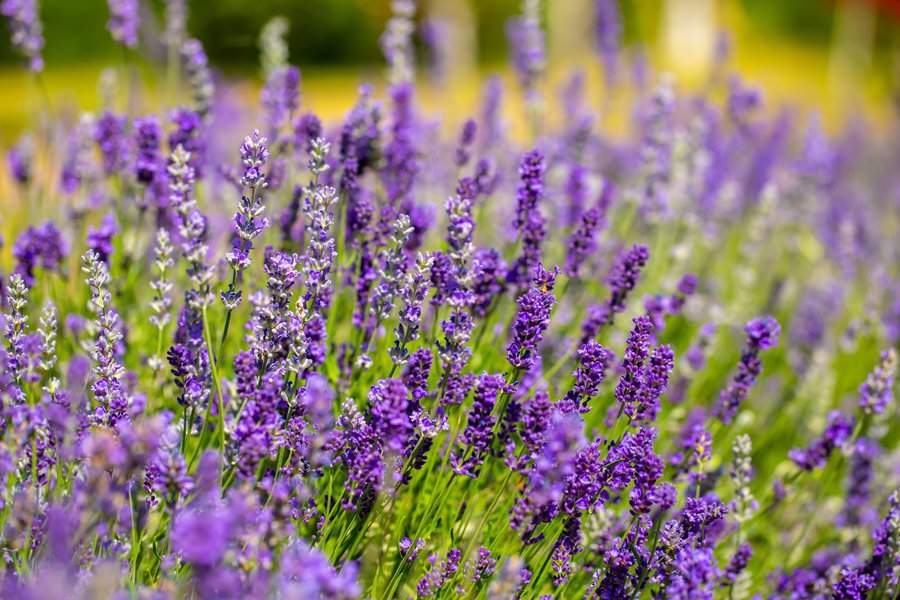
Lavender is valued for its aromatic properties and beautiful purple blooms. It prefers full sun and well-drained, sandy soil. Avoid overwatering; lavender is drought-tolerant once it’s grown. For bushier growth, prune after flowering.
20. Poppy
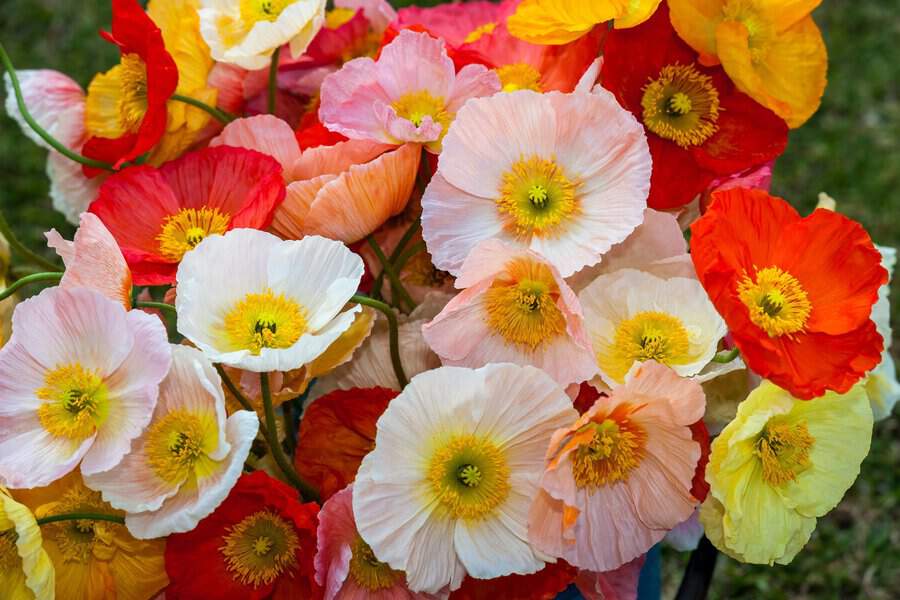
Poppies love full sun and well-drained soil and are known for their delicate, colorful flowers and unique shapes. Sow seeds directly into the ground in early spring for a vibrant display. Poppies are drought-tolerant once established, so you can avoid excessive watering.
21. Freesia
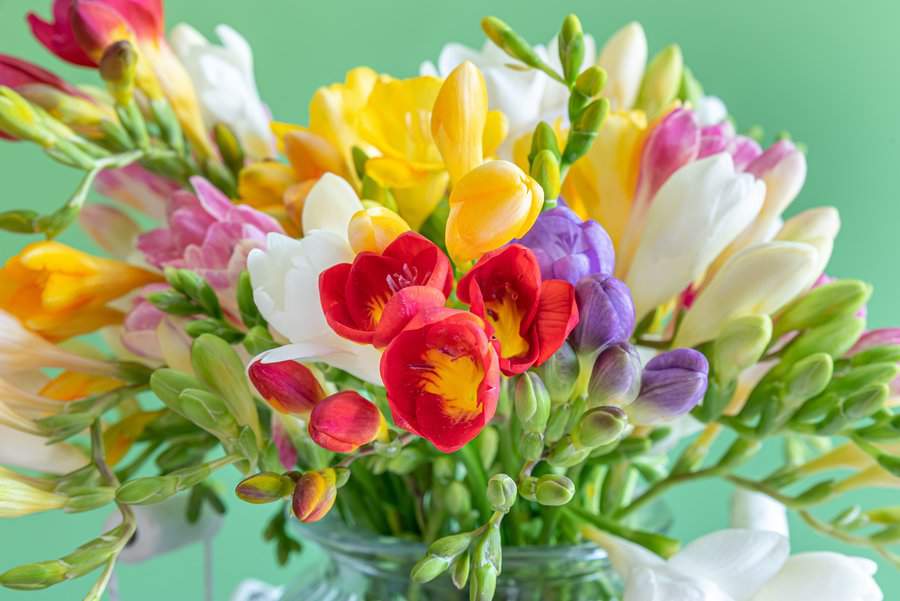
Freesias are prized for their fragrant and vibrant, funnel-shaped flowers. They prefer well-drained soil and full sun to partial shade. Plant corms in spring, spacing them apart to promote airflow. Regular watering during dry periods supports growth, but the soil must dry out between watering; otherwise, the plant will rot.
22. Plumeria
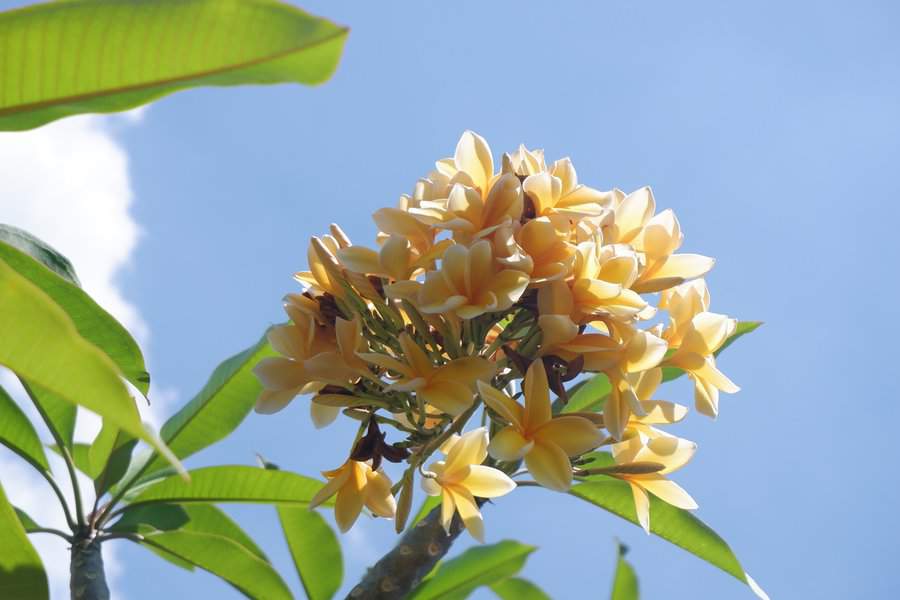
Plumeria has stunning, fragrant flowers that evoke tropical beauty and love full sun. Water them regularly during the growing season, letting the soil dry slightly between sessions. You should fertilize plumeria during the growing season.
23. Snapdragon
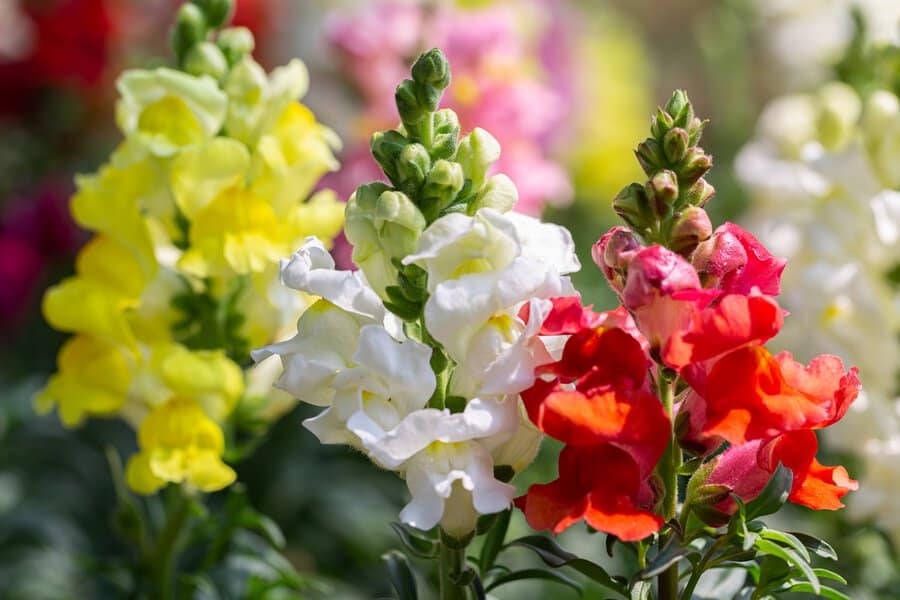
Snapdragons are charming annuals known for their tall flower spikes and unique blooms. They prosper in full sun and well-drained soil. Plant them regularly in early spring for summer blooms and deadhead to encourage continuous flowering. These flowers are perfect for borders or as cut flowers.
24. Anemone
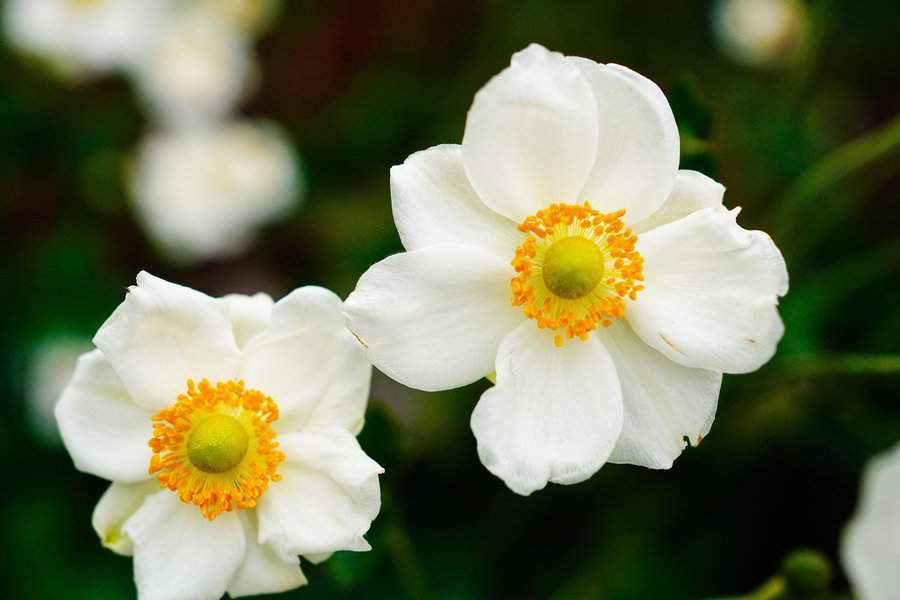
Anemones are perennials with vibrant flowers that come in various colors. They prefer partial shade and well-drained soil, which makes them perfect for woodland gardens. Plant tubers in the fall to get spring blooms, and cover them lightly with soil. Water anemones regularly during dry spells so that they can grow and flower healthily.
25. Chrysanthemum
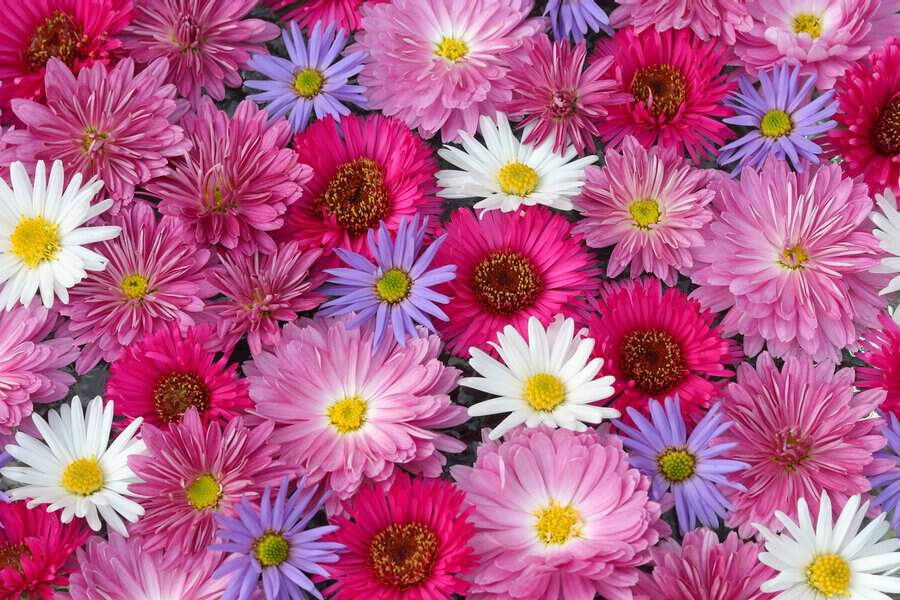
Chrysanthemums are fall favorites known for their wide range of colors and forms. They prefer full sun and well-drained soil to thrive. Plant them in the spring so they can properly be established before cooler weather sets in. Regular deadheading promotes extended blooming while pinching back in early summer encourages bushier growth.
26. Bleeding Heart
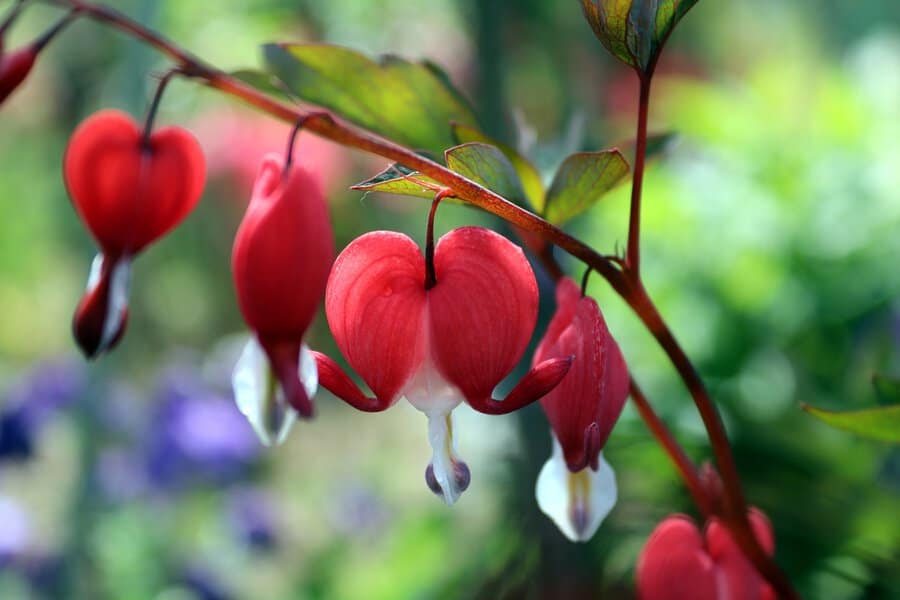
Bleeding hearts are unique perennials that feature heart-shaped blooms. They thrive in shaded areas with rich, well-drained soil. After blooming, allow the foliage to remain for nutrients before cutting back in the fall.
27. Foxglove
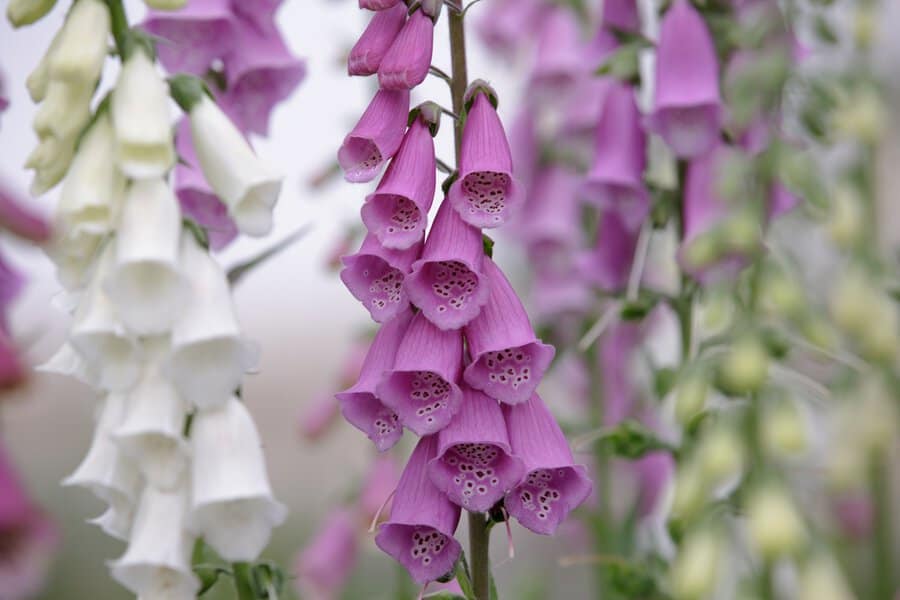
Foxgloves have tubular flowers that attract pollinators and prefer partial shade and well-drained soil. Sow seeds directly in the spring for summer blooms. The plants can self-seed and spread.
28. Amaryllis
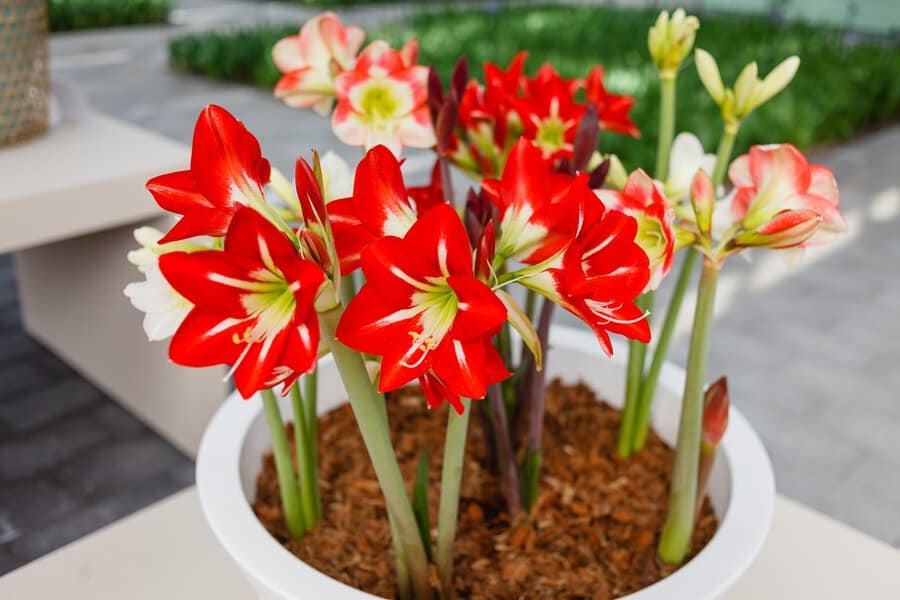
Amaryllis is a popular indoor flowering bulb that produces large blooms. This plant loves well-drained potting soil and prefers bright, indirect sunlight. Water moderately during the growing season and reduce watering as the plant goes dormant after blooming. These bulbs can be reused annually for striking winter displays.
29. Rhododendron
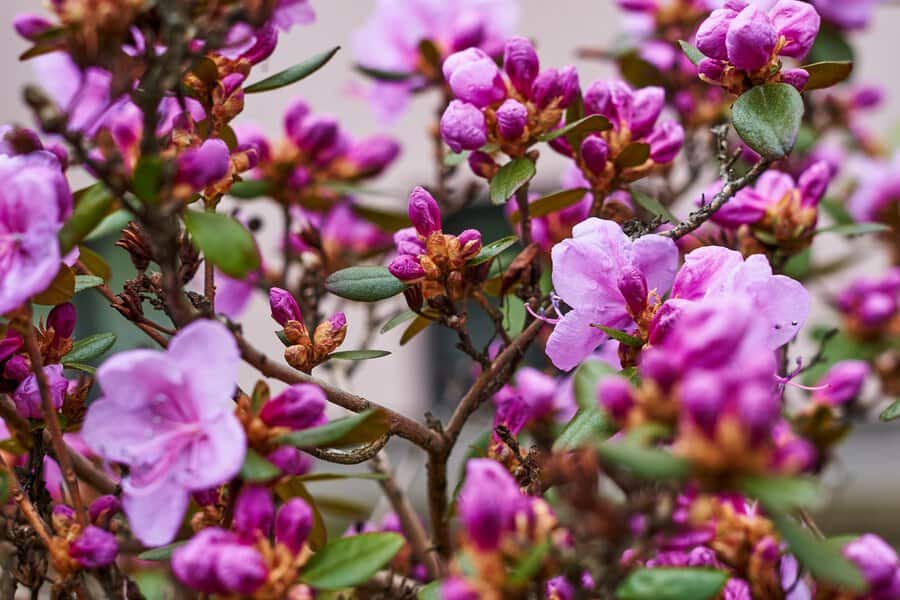
Rhododendrons are cherished for their showy clusters of blooms and lush foliage. They blossom in acidic, well-drained soil and partial shade. Regular watering is essential, especially during dry spells. Pruning after flowering helps shape the plant and promotes more blooms for the following season.
30. Marigold
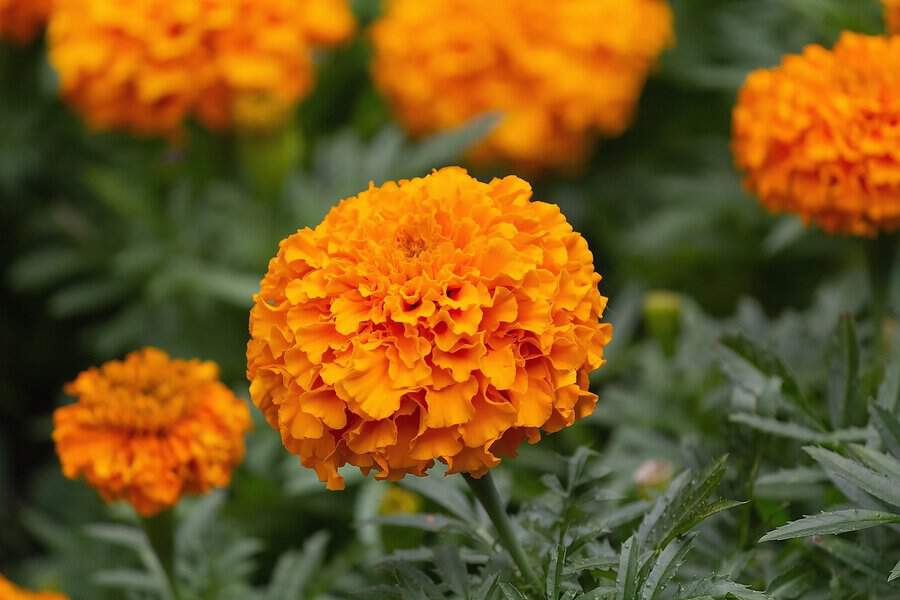
Marigolds are a favorite among gardeners because they are easy to grow and maintain. They flourish in sunny locations with well-drained soil. Known for their pest-repelling properties, these flowers can be strategically planted to protect vegetable gardens. Regular deadheading will keep them blooming longer throughout the season.
